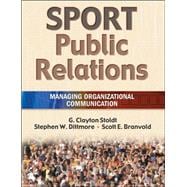
| preface | v | ||||
| acknowledgments | ix | ||||
|
1 | (20) | |||
|
2 | (1) | |||
|
3 | (4) | |||
|
7 | (10) | |||
|
17 | (2) | |||
|
19 | (1) | |||
|
20 | (1) | |||
|
21 | (20) | |||
|
22 | (6) | |||
|
28 | (2) | |||
|
30 | (2) | |||
|
32 | (7) | |||
|
39 | (1) | |||
|
39 | (2) | |||
|
41 | (22) | |||
|
42 | (1) | |||
|
42 | (14) | |||
|
56 | (2) | |||
|
58 | (4) | |||
|
62 | (1) | |||
|
62 | (1) | |||
|
63 | (22) | |||
|
65 | (2) | |||
|
67 | (4) | |||
|
71 | (6) | |||
|
77 | (5) | |||
|
82 | (1) | |||
|
83 | (1) | |||
|
84 | (1) | |||
|
85 | (20) | |||
|
86 | (2) | |||
|
88 | (8) | |||
|
96 | (1) | |||
|
97 | (6) | |||
|
103 | (1) | |||
|
103 | (2) | |||
|
105 | (20) | |||
|
107 | (12) | |||
|
119 | (1) | |||
|
119 | (4) | |||
|
123 | (1) | |||
|
123 | (2) | |||
|
125 | (22) | |||
|
126 | (7) | |||
|
133 | (10) | |||
|
143 | (3) | |||
|
146 | (1) | |||
|
146 | (1) | |||
|
147 | (20) | |||
|
148 | (7) | |||
|
155 | (5) | |||
|
160 | (1) | |||
|
161 | (3) | |||
|
164 | (1) | |||
|
164 | (3) | |||
|
167 | (18) | |||
|
169 | (2) | |||
|
171 | (11) | |||
|
182 | (1) | |||
|
183 | (2) | |||
|
185 | (18) | |||
|
186 | (1) | |||
|
187 | (2) | |||
|
189 | (11) | |||
|
200 | (1) | |||
|
201 | (2) | |||
|
203 | (18) | |||
|
204 | (4) | |||
|
208 | (1) | |||
|
208 | (6) | |||
|
214 | (3) | |||
|
217 | (2) | |||
|
219 | (1) | |||
|
220 | (1) | |||
|
220 | (1) | |||
|
221 | (16) | |||
|
222 | (2) | |||
|
224 | (4) | |||
|
228 | (7) | |||
|
235 | (1) | |||
|
235 | (1) | |||
|
236 | (1) | |||
|
237 | (18) | |||
|
238 | (12) | |||
|
250 | (4) | |||
|
254 | (1) | |||
|
254 | (1) | |||
|
255 | (22) | |||
|
256 | (11) | |||
|
267 | (3) | |||
|
270 | (4) | |||
|
274 | (1) | |||
|
275 | (2) | |||
|
277 | (22) | |||
|
278 | (8) | |||
|
286 | (2) | |||
|
288 | (3) | |||
|
291 | (3) | |||
|
294 | (4) | |||
|
298 | (1) | |||
|
298 | (1) | |||
| appendix A Selected Pages From a Set of College Football Game Notes | 299 | (12) | |||
| appendix B Selected Pages From a Women's Basketball Media Guide | 311 | (10) | |||
| appendix C Sample Crisis Communications Plan | 321 | (12) | |||
| appendix D Community Relations Plan for a Minor League Baseball Franchise | 333 | (6) | |||
| references | 339 | (16) | |||
| index | 355 | (10) | |||
| about the authors | 365 |
The New copy of this book will include any supplemental materials advertised. Please check the title of the book to determine if it should include any access cards, study guides, lab manuals, CDs, etc.
The Used, Rental and eBook copies of this book are not guaranteed to include any supplemental materials. Typically, only the book itself is included. This is true even if the title states it includes any access cards, study guides, lab manuals, CDs, etc.